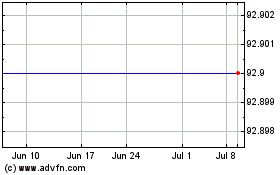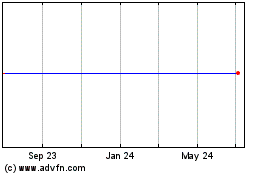By Paul Page
Sign up:With one click, get this newsletter delivered to your
inbox.
China Inc. is set to take control of a big piece of the global
agriculture supply chain. The approval by shareholders of
agro-giant Syngenta AG's $43 billion takeover by China National
Chemical Corp. sets in motion a consolidation that portends a
profound shift in the agriculture sector. The WSJ's Brian Spegele
and Kane Wu report that China's biggest foreign deal to date will
give the country a greater role in U.S. and other countries' food
supplies as it scoops up technologies for its own farms. It also
comes against the backdrop of broad industry consolidation, which
has triggered objections from farmers over less choice and
potentially higher prices. The biggest immediate impact may be
within China, where ChemChina executives hope to use Syngenta's
seed and pesticide business to help remake the country's fragmented
and inefficient sector for farming and food distribution. The sheer
size of the Chinese market means those efforts are likely to be
felt in agriculture businesses around the world.
China is making its biggest push yet to take its place in one of
the world's most sophisticated supply chains. The maiden flight of
its first commercial airliner marks a breakthrough in the country's
drive to build up its own aerospace sector, the WSJ's Trefor Moss
reports, and a landmark for China as it races to upgrade its
industrial capacity in advanced manufacturing. The C919 still faces
a steep climb to compete with Boeing Co. and Airbus SE, but
analysts say the research effort that's fallen years behind
schedule and costs many billions of dollars remains critical to
China's long-term industrial goals. China seems to care less about
returns from costly experiments like the C919 than about securing a
foothold in high-value industries dominated by foreign players. For
now, Western manufacturers may have little to fear: some
three-quarters of the inner workings come from foreign aerospace
companies.
Logistics companies are betting any rebound in U.S. consumer
spending comes over the web. Businesses tied to e-commerce
fulfillment resumed hiring at a rapid pace in April, WSJ Logistics
Report's Jennifer Smith writes, even as traditional transportation
carriers paused their job growth. The latest Department of Labor
report shows the warehousing and storage sector, which includes
fulfillment centers that process online orders, added 2,500 jobs.
Truckers pulled back, however, and freight railroads slashed jobs
even as shipping volumes improved. The strong hiring at logistics
and courier companies was part of a robust national report, with
payrolls expanding by 211,000 jobs last month. Still, the hiring
may not revive tepid shipping demand: Job expansion in
manufacturing slowed, and the biggest payroll gains came in areas
such as healthcare, education and finance -- service sectors that
won't produce goods, at least until the newly-hired workers start
spending their earnings.
SUPPLY CHAIN STRATEGIES
Wal-Mart Stores Inc. doesn't want to just wait around for
consumers to order household goods online. The retailing giant is
seeking a patent for the use of sensors that would be attached to
goods in homes and track their use and, perhaps more significantly,
trigger automatic delivery of replacements. The WSJ's Sarah
Nassauer reports the proposed system is an advanced version of
subscription services that other retailers have built to allow
consumers to simply scan or push buttons to order goods. Wal-Mart's
taking another step by creating a sort of home-based inventory
management system, with the store's marketing system added in to
track consumer behavior and suggest new products. Whether consumers
will want to have Wal-Mart tracking when they do laundry remains a
question, but the reach of the technology under research suggests
the fierce competition that's underway for e-commerce
innovations.
The future of 3-D printing looks increasingly like it is being
put together in Europe. General Electric Co. is placing two
European companies it recently acquired at the core of a new
business unit it is spinning out of GE Aviation, the WSJ's Daniel
Michaels reports, part of a series of moves the industrial giant is
making across the continent pointed toward a new world of
manufacturing. GE is considering European sites to host its new GE
Additive division. Along with investments Siemens AG of Germany is
undertaking, the research is already having an impact on the
production of aircraft-engine parts, and GE wants additive
manufacturing -- as it's more formally known -- to generate $1
billion in revenue by 2020, up from $300 million today. That's a
small slice of the manufacturing market, but the growing research
in Europe could help 3-D printing gain traction in more industrial
supply chains.
QUOTABLE
IN OTHER NEWS
The euro rose to a seven-month high against the dollar in a
short-lived rally after Emmanuel Macron won the French presidency.
(WSJ)
U.S. consumer borrowing rose at a 5.2% seasonally adjusted
annual rate in March. (WSJ)
China's foreign-exchange reserves rose by $20.45 billion in
April, the third straight monthly increase. (WSJ)
Canadian Prime Minister Justin Trudeau says he would consider
retaliatory measures if the U.S. imposes a new tariff on the
country's lumber exports. (WSJ)
The U.S. Justice Department is probing whether Baxter
International Inc. colluded with other companies to create supply
shortages of injectable medicines and benefit from higher prices.
(WSJ)
Dutch paints and chemicals maker Akzo Nobel NV rebuffed a third,
unsolicited takeover bid by U.S. rival PPG Industries Inc.
(WSJ)
Monsanto Co. is investing in new gene-editing capabilities to
keep an edge over rival suppliers of high-tech crop seeds.
(WSJ)
The Transportation Security Administration warned trucking
companies and their drivers about the use of stolen trucks as
methods of attack. ( CBS)
YRC Worldwide Inc. is cutting 180 management and other non-union
jobs after the trucker's first-quarter net loss doubled to $25.3
million. (Kansas City Star)
A regional cargo plane contracted to United Parcel Service Inc.
crashed at a West Virginia airport, killing the two crew members.
(WDRB)
Soybean exports from the U.S. and Brazil, the world's largest
growers, are at the highest level ever for this time of year.
(Bloomberg)
Copper prices have fallen to five-month lows amid rising
inventories. (Australian Financial Review)
Orders for industrial robotics equipment in North America rose
32% year-over-year in the first quarter. (DC Velocity)
A garment-industry alliance suspended operations at nine more
Bangladesh factories because of poor safety standards.
(Just-Style)
Air Transport Services Inc. expanded first-quarter net profit
21% to $10 million as revenues jumped amid growing service for
Amazon.com Inc. (Air Cargo News)
Terminal operator DP World is pursuing port development deals in
India worth a combined $1.3 billion. (Port Technology)
Oregon's Port of Coos Bay wants to advance a $400 million
deepening project to give regional bulk shippers greater access to
international markets. (The Register-Guard)
Amazon launched grocery delivery in Berlin and Potsdam for
members of its Prime subscription service in Germany. (Reuters)
Indian carrier Blue Dart Express saw net profit fall 37% in the
March quarter despite a 7% gain in revenue. (Business Standard)
ABOUT US
Paul Page is deputy editor of WSJ Logistics Report. Follow him
at @PaulPage, and follow the entire WSJ Logistics Report team:
@brianjbaskin, @jensmithWSJ and @EEPhillips_WSJ and follow the WSJ
Logistics Report on Twitter at @WSJLogistics.
Write to Paul Page at paul.page@wsj.com
(END) Dow Jones Newswires
May 08, 2017 06:42 ET (10:42 GMT)
Copyright (c) 2017 Dow Jones & Company, Inc.
Syngenta (NYSE:SYT)
Historical Stock Chart
From Jun 2024 to Jul 2024

Syngenta (NYSE:SYT)
Historical Stock Chart
From Jul 2023 to Jul 2024
